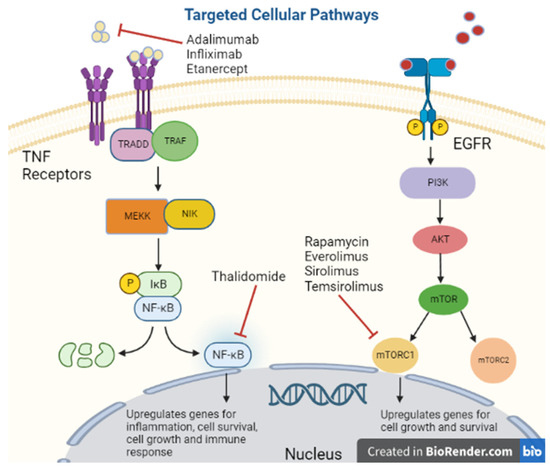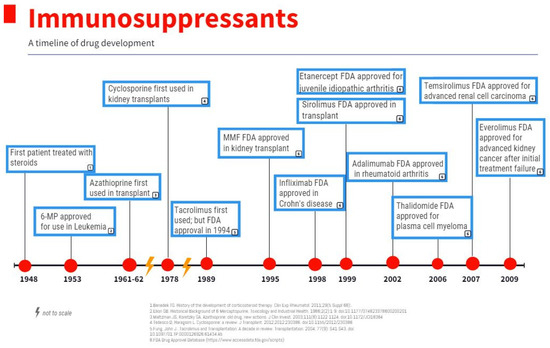You're using an outdated browser. Please upgrade to a modern browser for the best experience.
Please note this is a comparison between Version 1 by Amanda Reyes and Version 2 by Sirius Huang.
Autoimmunity and cancer rates have both been on the rise in Western civilization leading many to question if there is a link between the two entities. Likewise, the association between immunodeficiency or induced immunodeficiency and malignancy has been at the forefront of medical research with particular interest in the transplanted patients, HIV patients and patients with autoimmune disease requiring chronic immunosuppression.
- autoimmunity
- immunodeficiency
- immunosurveillance
1. Introduction
The concept of an immune system whereby innate cells identify and destroy foreign or malfunctioning cells has intrigued scientists for decades. As knowledge expanded so did the complexity of investigations. In the 1950s–1970s, researchers Burnet and Thomas formulated the concept of cancer immunosurveillance whereby a functioning immune system, at the time thought to be cells derived from the Thymus, can recognize ‘transformed’ cells or tumor cells [1][2][1,2]. However, there was limited proof of this concept in animal experimental models several decades after the initial theory was published [3][4][5][3,4,5]. More recently this concept of the protective immunosurveillance has been redefined into a broad topic of cancer immunoediting with 3 distinct phases termed elimination, equilibrium and escape [6] The phases covered variety of functions including both the innate and adaptive immunity as well as tumor recognition and tumor modification [6]. Additional support of this concept is demonstrated by the discovery of mice without properly functioning lymphocytes developed malignancy at a significantly higher rate compared to the wild type [7]. Thus, properly functioning immune systems are beneficial in the targeting and destruction of tumor cells.
2. Autoimmunity and Cancer Correlation
Several studies have highlighted the connection between chronic inflammation and the development of malignancy [8]. While the exact mechanism of this relationship is not known, some speculate chronic inflammation leading to antigen specific cell damage, activation of Type 2 immune response mediated by IL-4 and IL-13, and relative CTLA-4 deficiency are potential triggers [8]. Other studies stipulate inflammatory cells themselves are a potential mechanism such as tumor-associated macrophages which can stimulate tumor growth and angiogenesis [9]. Observational representation of this concept can be seen in the increase in rates of autoimmune gastritis and its associated increase in rates of gastric cancer in younger women who have the highest incidence of autoimmune disease in comparison with a previously high prevalence of gastric cancer in men [10]. The association between autoimmunity induced inflammation and malignancy does not have a negative outcome always. A review by Zityogel et al. discussed the concept of ‘beneficial autoimmunity’ and identified examples of therapy-induced (such as immune checkpoint inhibitors) as well as idiopathic or spontaneous autoimmune disease conferring favorable outcomes against oncologic disease [11]. A higher level of T cells that recognize tumor-specific antigens available for anticancer immunosurveillance is thought to be another mechanism of beneficial autoimmunity [11]. In a large SEER [Surveillance, Epidemiology, and End Results program] database study, 13.5% of lung cancer patients were diagnosed with autoimmune disease during or after their cancer diagnosis [12]. However, a retrospective cohort study comparing lung cancer patients with and without autoimmune disease did not find any significant difference in progression-free survival per stage among the two groups, even though the autoimmune group was less likely to receive the standard of care inferring some protective benefit from the autoimmune disease [13]. In paraneoplastic encephalomyelitis, most commonly seen in patients with small cell lung cancer [SCLC], there was a favorable response to chemotherapy observed in patients who tested positive for anti-hu antibodies, autoantibodies against neuronal RNA binding proteins [14][15][14,15]. Given the evidence of beneficial autoimmunity, it would appear immunosuppression is a larger contributor to malignancy risk compared to autoimmune disease itself. Further evidence demonstrated in a 2020 review on celiac’s disease [treated with dietary modification] which found that overall malignancy risk was low and even negligible one year after diagnosis [16]. Likewise, a European study of autoimmune thyroiditis treated with hormone therapy did not find an elevated risk of thyroid cancer after a 10-year follow up period [17][18][17,18]. On the other hand, a Taiwanese study did find an increased risk of both thyroid cancer and colorectal cancer among Hashimoto’s thyroiditis patient population [19]. From this mixed data autoimmune disease must have a role in the development of malignancy. Interestingly, malignancy has also been shown to stimulate autoimmunity, most notably through well-known paraneoplastic syndromes [20]. Paraneoplastic rheumatologic conditions such paraneoplastic polyarthritis and hypertrophic osteoarthropathy are a few notable examples and are thought be related to upregulation of VEGF and fibroblast growth factor 23 (FGF23) in tumors [20]. SCLC is another typical example of malignancy and associated with a high frequency of paraneoplastic syndromes that can proceed the diagnosis or be the first sign of relapse [21].3. Immunodeficiency and Cancer Correlation
While overactive immune systems are a risk for malignancy, studies have also demonstrated that immunodeficiency may also be an independent risk factor [22]. This concept was first examined in mice models. In a research study, mice without an innate immune system were more vulnerable to both spontaneous and externally induced cancers [23]. A study involving the US Immune Deficiency Network Database examine primary immunodeficiency patients which included patients from 39 academic medical centers and >300 single gene mutations of the immune system in comparison to the age-adjusted SEER population. They identified a 1.42-fold increase in relative risk of malignancy in the primary immunodeficient population [22]. Interestingly, in subgroup analysis, men with primary immunodeficiency had the highest increase in relative risk, 1.91, compared to the age-adjusted population, while women were diagnosed with malignancy at similar rates [22]. Additional data provided by a large meta-analysis of HIV/AIDS patients [7 studies] and transplanted patients [5 studies] showed immunodeficiency and immunosuppression conferred a higher risk for malignancy in 20 out of the 28 types of cancer [24]. The authors proposed several mechanisms for the increased risk of malignancy including increased infections, immunodeficiency, increased cancer screening, and lifestyle factors [24]. However, the latter two theories were thought to be less likely as rates of screened cancers, breast and colon, were not elevated in both study populations and lifestyle factors were not standard across the study populations. Infection was thought to be an independent factor as many of the cancers in the analysis had an infectious cause [i.e., pylori, hepatitis, EBV] and several AIDS-defining malignancies were included [24]. However, notable exceptions were non-melanoma skin cancer and lip cancer that have no known infectious etiology and were found to have higher rates of malignancy in transplant recipients. Interestingly, the common epithelial-derived cancers, colon, breast, rectum, and ovarian, did not have higher rates among the immunosuppressed population [24].4. Immunosuppression in Autoimmune Disease and Cancer Correlation
Autoimmune disease can be organ specific or systemic, but treatment and presentation vary greatly within each category. The mainstay of treatment in autoimmune disease can be separated into two categories, replacement therapy vs. immunosuppressive [25]. A NEJM review proposed that immunosuppressive treatment can be further characterized into 4 subtypes: alteration of thresholds of immune activation, modulation of antigen specific cells, reconstitution of the immune system and sparing of target organs [26]. Reconstitution of the immune system involves bone marrow ablation with or without the addition of stem cells, reserved for severe refractory disease as is an aggressive treatment [27]. More commonly used treatments target inflammatory pathways [26]. One such example are inhibitors of the TNF receptor as binding of its substrate triggers downstream signaling leading to upregulation of inflammation and apoptosis (Figure 1) [28].
Figure 1.
Targeted cellular pathways.
Tumor Necrosis Factor-Alpha Inhibitors
Tumor Necrosis Factor-Alpha [TNF-alpha] has been synonymous with pro-inflammation given its association with pro-inflammatory cytokines IL-1, IL-6, IL-8 and VEGF; therefore, its inhibitors are used for immunosuppression (Figure 2) [29]. However, there is some concern regarding the diverse functionality of TNF-alpha as low levels promoted angiogenesis while higher levels were anti-angiogenetic [30]. Many molecular pathways of TNF-alpha are associated with the upregulation of matrix metallopeptidase 9 [MMP9] which directly degrades the extracellular matrix allowing tumor migration and indirectly promotes cytokines that support cell tumor growth [31]. Despite this mixed data on TNF-alpha, researchers believed blocking its action could be a potential target for malignancy.
Figure 2.
Immunosuppressants: a timeline of drug development.
